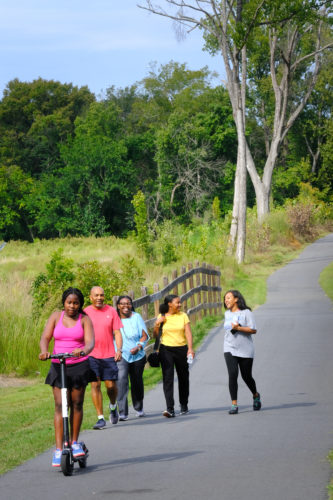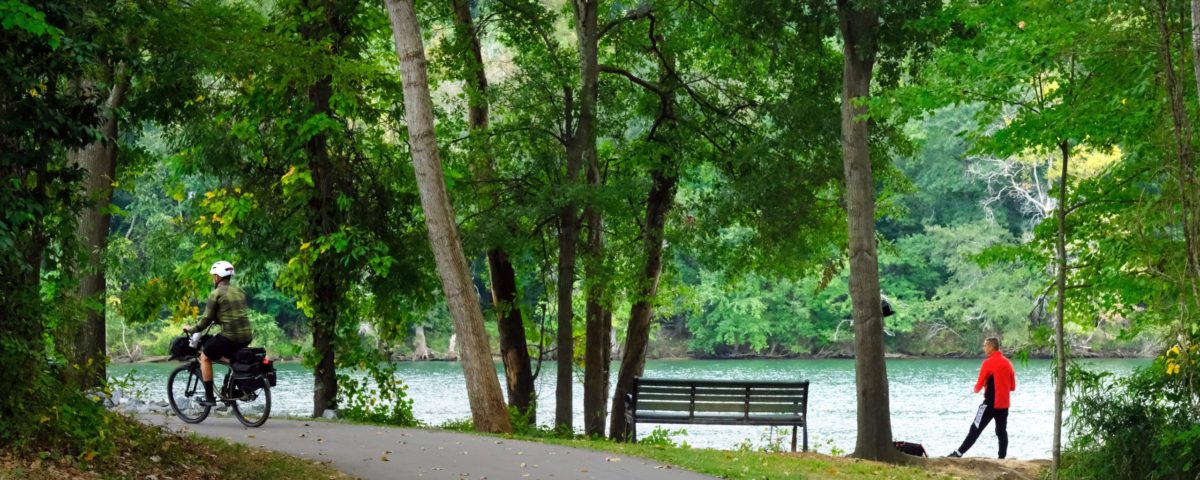
Springtime wonders
April 10, 2023
New federal law will reduce conservation easement fraud
June 8, 2023For trail users and supporters, it’s no secret that access to the outdoors brings many benefits. Better health for users of course, but also positive economic and environmental impacts for communities. Thanks to a recent study about the Carolina Thread Trail network, we can now assign a monetary value to many of these intangibles.

Benefits for Economy, Health and Environment
We partnered with Mecklenburg County and the City of Mount Holly to sponsor an economic impact study of six trails within the Thread Trail network, conducted by N.C. State University’s Institute of Transportation
Research and Education (ITRE). Together, the selected trails total 13 miles of the Thread Trail network and are located in four different counties: Mecklenburg, Cabarrus, Gaston and York. The results are impressive, though not at all surprising to anyone familiar with trails.
In examining these six trails, ITRE found each trail supports more than $3 million in annual business sales and local jobs. The trails are conduits for health and wellness, reducing healthcare costs for users and supporting healthy lifestyles, to the tune of a collective $3.9 million. Trails provide low-impact transportation options, reducing carbon dioxide (CO2) emissions and eliminating miles driven in vehicles. The ecosystems protected along trails help to sequester carbon, in addition to providing important habitat for wildlife.
Together, the six trails studied provided more than $1.5 million in environmental benefits. The study shows the positive economic impact trails are having in communities across our region, benefits that will grow exponentially as the Thread Trail expands.
6 TRAILS INCLUDED IN THE ITRE STUDY
- Four Mile Creek Greenway
(Matthews, N.C.) - Piedmont Medical Center Trail
(Rock Hill, S.C.) - Hector H. Henry II Greenway
(Concord, N.C.) - South Fork Trail
(McAdenville, N.C.) - Mount Holly River Hawk Greenway
(Mount Holly, N.C.) - The Goat Island Park and River Link Greenway
(Cramerton, N.C.)
Counting Trips on the Trail
We are also gathering data about trail use through anonymous activity counters. These trail counters record each time a person passes by, providing simple numbers on how often a trail is being used. Since late 2021, our staff
has installed counters at 24 sites, with more to come. 2022 numbers show over 600,000 trips. The work to achieve the Thread Trail vision of 1,600 miles of connected trail is ongoing. But these studies make clear that every trail provides a lasting impact for the local community and the world.
Photos by Nancy Pierce.

